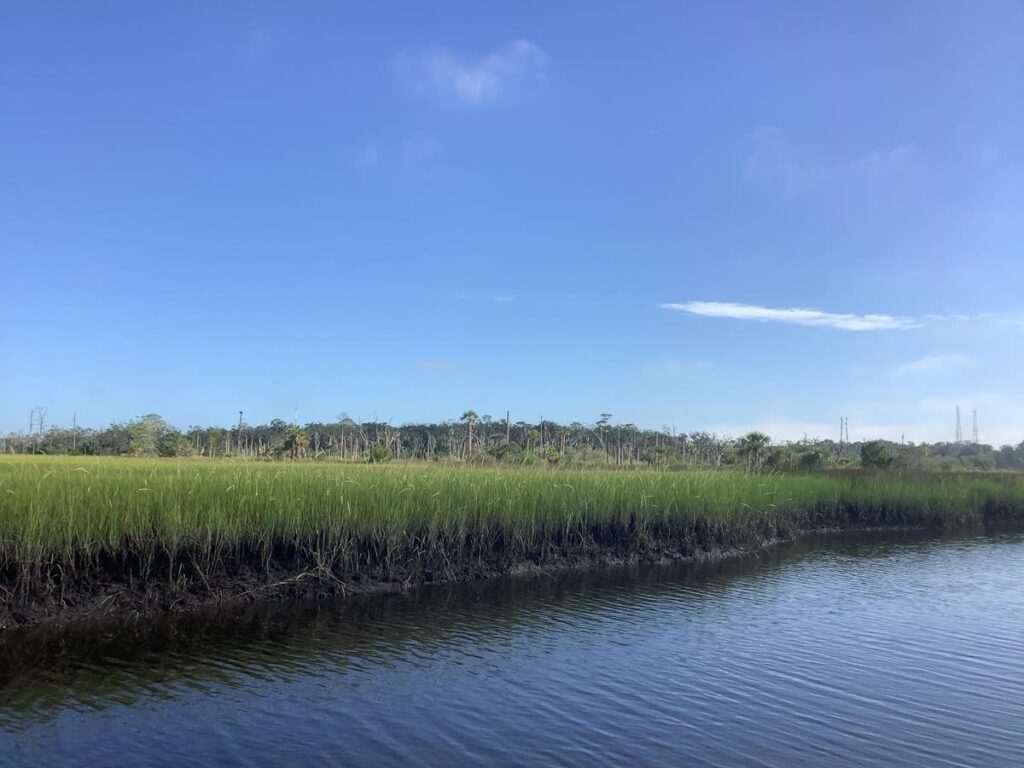North Florida Land Trust
Press Release
May 6, 2021
Dozens of organizations have come together to support a plan for salt marsh conservation and restoration
 Jacksonville, Fla., May 3, 2021 – North Florida Land Trust (NFLT) has joined 24 organizations to call on the Southeast Regional Partnership for Planning and Sustainability (SERPPAS) to develop a comprehensive plan to conserve and restore salt marsh along the South Atlantic coast. SERPPAS will be meeting on May 4 and will decide whether they will embark on a 1 million-acre salt marsh protection plan along the Southeast coastline which extends from Northeast Florida to North Carolina. NFLT has signed the letter along with other conservation organizations and those that represent fishing, birding, hunting, boating and public policy interests.
Jacksonville, Fla., May 3, 2021 – North Florida Land Trust (NFLT) has joined 24 organizations to call on the Southeast Regional Partnership for Planning and Sustainability (SERPPAS) to develop a comprehensive plan to conserve and restore salt marsh along the South Atlantic coast. SERPPAS will be meeting on May 4 and will decide whether they will embark on a 1 million-acre salt marsh protection plan along the Southeast coastline which extends from Northeast Florida to North Carolina. NFLT has signed the letter along with other conservation organizations and those that represent fishing, birding, hunting, boating and public policy interests.
Salt marshes are important for many reasons and the South Atlantic salt marsh plan would make sure these coastal ecosystems remain abundant and healthy. Salt marshes are vital habitats for fish, birds and other animals. They protect coastlines from flooding, erosion, and storm surge and serve as the first line of defense for many coastal communities including military installations. About a dozen military bases and training grounds are located along or close to the Southeast coastline. Salt marshes also support fishing, tourism, and other businesses that are vital to coastal economies.
SERPPAS is a six-state partnership made up of state and federal agencies that collaborate on resource-use decisions that support national defense and the conservation of natural resources, sustainable working lands and communities in the Southeast. NFLT and others are committed to partnering with SERPPAS on the salt marsh conservation plan which would bring together public and private partners to create and implement a protection plan.
“Partnerships like this have been proven effective when it comes to conservation and we look forward to working with SERPPAS on a plan to protect these important ecosystems,” said Jim McCarthy, president of NFLT. “We have seen firsthand how the military involvement in the conservation of lands can help protect the military mission while advancing shared protection goals. We have worked with Camp Blanding to conserve the lands surrounding that military installation to provide a buffer for training and testing while protecting critical wildlife habitats that allow migration for many threatened or endangered species.”
NFLT has conserved more than 4,000 acres of salt marshes. The nonprofit is currently working to raise money to purchase 245 acres located in the Intracoastal Waterway at J. Turner Butler Blvd in Jacksonville Beach. The property is nine small upland islands surrounded by salt marshes and oyster beds that create an extremely biodiverse ecosystem. It is home to rare species including the federally endangered West Indian manatee and the federally threatened wood stork both of which have been seen within the property boundaries. For more information on how to help preserve these islands, visit https://www.nflt.org/small-islands/.
About North Florida Land Trust
North Florida Land Trust is a not-for-profit organization that seeks to protect the natural resources, historic places and working lands (farms and ranches) throughout north Florida. Founded in 1999, NFLT has preserved tens of thousands of acres of land through donation or purchase of land as well as conservation easements. NFLT is funded largely by private and corporate contributions and works closely with willing landowners and public agencies at all levels of government, not-for-profit partners, and foundations. For more information, visit nflt.org.

Excellent news!! In Nassau County, our salt marsh is critical for our environmental and economic sustainability and resilience. NFLT is working with both the City of Fernandina Beach and County to conserve land in both jurisdictions.